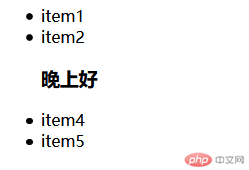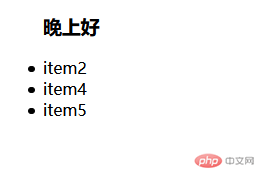Correction status:qualified
Teacher's comments:



<script>//while循环,入口判断const colors=["red","grenn","blue"]let i=0;//length是数组的长度while(i<colors.length){console.log("%c%s", "color:red",colors[i]);//更新变量i++}//for循环for(i=0;i<colors.length;i++){console.log("%c%s", "color:blue", colors[i]);}//以上对象不能用,对象用for-inconst less={name:"js",score:80};for(let key in less){console.log(less[key]);}//其中的key可以是变量名,也可以遍历数组for(let key in colors){console.log(coloes[key]);}//for-of:遍历的终结者,都可以用这个来遍历for (let item of colors){console.log(irem);}//但是在遍历自定义对象的时候回报错for(let item of less){console.log(item);}//因为自定义对象没有代送器接口</script>
<script>//声明构造函数,一般是首字母大写,里面的可以传参数function User(name,email){this.name=name;this.email=email;}//声明对象,给构造函数里面的参数传参const user=new User("马","ma@qq.com");console.log(user);//给user的父级原型里面加点东西user._proto_.salary=8899;//访问,它这个访问会先出自由属性上找,找不到会去原型里面找,这叫原型链console.log(user.salary);//再声明一个对象,给构造函数的参数传参const user1=new User("张","za@qq.com");//访问这个对象的salary属性console.log(user1.salary);//访问发现user._proto_的salary共享给了user1//让对象的_proto_和构造函数的prototype后返回true,发现完全相等console.log(user1.__proto__ === User.prototype);//可以通过prototype添加值和属性来共享给下面的子对象//构造函数的自由属性比原型链权限高,会覆盖</script>
<script>//先声明一个类const User=function(name,email){this.name=name;this.email=email;};//然后给这个类的原型链上加上匿名函数User.prototype.show=function(){return{name:this.name,email:this.email};};//然后声明变量赋值const user=new User("小马","ma@qq.com");//然后调用原型链上的show方法console.log(user.show());//es6中改写方法class User1{constructor(name,email){this.name=name;this.email=email;}show(){return{name:this.name,email:this.email}}}const user1=new User1("小马","ma@qq.com");console.log(user1.show());//静态方法class User2{//static是关键字,后面加上静态方法static fetch(){return this.hello(this.userName);}//静态属性static userName="小王";//静态方法static hello(name){return"hello"+name;}}console.log(User2.fetch());//私有变量,只能在本类中使用,类外,子类中不能用,重名没关系,外面比里面的大,会覆盖,不知道为啥火狐不支持私有变量语法class User3{//前面加个#就是私有变量#age=40;get age(){return this.#age;}set age(value){if(value>=18 && value<=60){this.#age=value;}elsr{throw new Error("必须在18-60之间")}}}console.log(User3.get);console.log(User3.age);//类的继承,叫子类//子类继承类的一切,处了私有的//用extends来关联两者class Child extends User1{constructor(name,email,gender){//如果要调用父级的变量,必须用super俩调用,要是直接用回报错super(name,email);this.gender=gender;}show() {return { name: this.name,email: this.email,gender: this.gender};}}const child = new Child("老师", "a@qq.con", "男");console.log(child.show());</script>
<body><ul id="list"><li class="item">item1</li><li class="item">item2</li><li class="item">item3</li><li class="item">item4</li><li class="item">item5</li></ul><form action=""><input type="text" /></form><script>//querSelectorALL获取满足所以的条件的元素const lis = document.querSelectorALL("#list li");console.log(lis);//用forEach()来遍历获取到的值lis.forEach((item)=>console.log(item));//获取第一个,直接用伪类选择器来选中let first=document.querySelectorALL("#list li:first-of-type");console.log(first[0]);//可以通过用document.querySelector来直接选择第一个first=document.querySelector("#list li")console.log(first);</script></body>
<body><ul id="list"><li>item1</li><li>item2</li><li>item3</li><li>item4</li><li>item5</li></ul><script>//增加const ul=document.querySelector("#list");const li=document.createElement("li");ul.appendChild(li);li.innerText="新添加的";//li.innerHTML = '<li style="color:red">红色</li>';</script></body>

<body><ul id="list"><li>item1</li><li>item2</li><li>item3</li><li>item4</li><li>item5</li></ul><script>const ul = document.querySelector("#list");//批量增加const Frag=new DocumentFragment();for(let i=0;i<4;i++){const li=document.createElement("li");li.innerText="批量添加";Frag.appendChild(li);}ul.appendChild(Frag);</script></body>

<body><ul id="list"><li>item1</li><li>item2</li><li>item3</li><li>item4</li><li>item5</li></ul><script>const ul = document.querySelector("#list");//更新插入一个值let h3=document.createElement("h3");h3.innerText="晚上好";//先把h3代替第三位document.querySelector("li:nth-of-type(3)").replaceWith(h3);//然后把h3代替到第一位ul.replaceChild(h3, document.querySelector("li:nth-of-type(1)"));</script></body>


<body><ul id="list"><li>item1</li><li>item2</li><li>item3</li><li>item4</li><li>item5</li></ul><script>const ul = document.querySelector("#list");//更新插入一个值let h3=document.createElement("h3");h3.innerText="晚上好";//先把h3代替第三位document.querySelector("li:nth-of-type(3)").replaceWith(h3);//然后把h3代替到第一位ul.replaceChild(h3, document.querySelector("li:nth-of-type(1)"));//删除h3ul.removeChild(document.querySelector("#list h3"));</script></body>

<body><ul id="list"><li>item1</li><li>item2</li><li>item3</li><li>item4</li><li>item5</li></ul><script>const ul = document.querySelector("#list");//批量增加const Frag=new DocumentFragment();for(let i=0;i<4;i++){const li=document.createElement("li");li.innerText="批量添加";Frag.appendChild(li);}ul.appendChild(Frag);//遍历,用于查询//获取所以的子元素console.log(ul.children);//获取子元素的数量,就是现实子元素的长度console.log(ul.children.length);//更优雅的,第二种方式好console.log(ul.childElementCount);//第一个子元素console.log(ul.firstElementChild);//最后一个console.log(ul.lastElementChild);//获取父节点console.log(ul.lastElementChild.parentElement);//前一个兄弟const jiu = document.querySelector("#list li:nth-of-type(9)");//给他加个样式jiu.style.color = "yellow";//那到前一个兄弟看看内容const ba = jiu.previousElementSibling;ba.style.color = "green";//拿到后一个兄弟console.log(jiu.nextElementSibling.innerHTML);console.log((jiu.nextElementSibling.style.color = "green"));</script></body>
